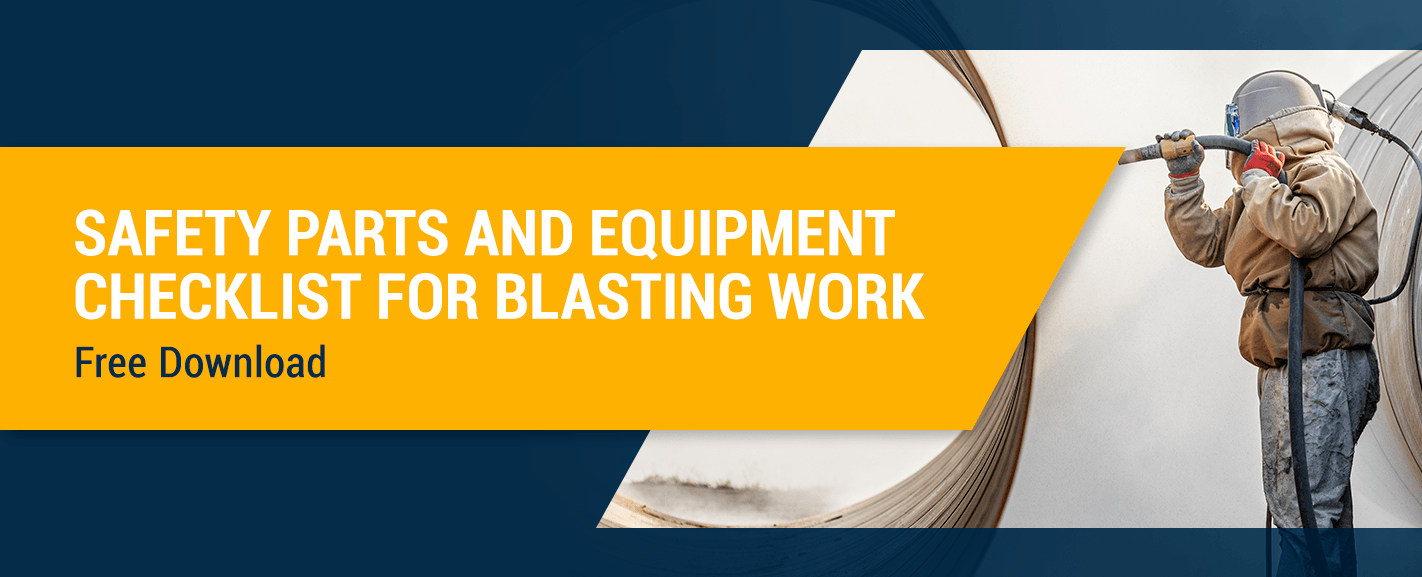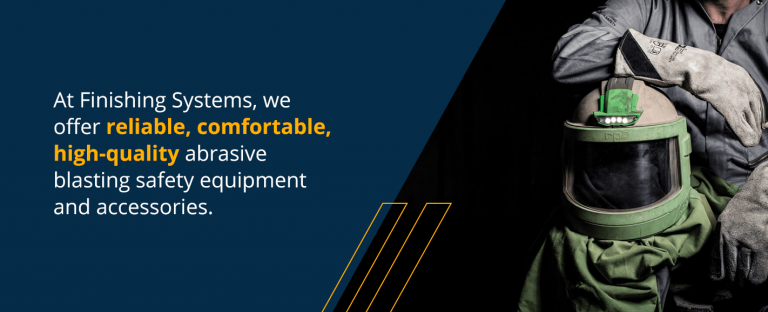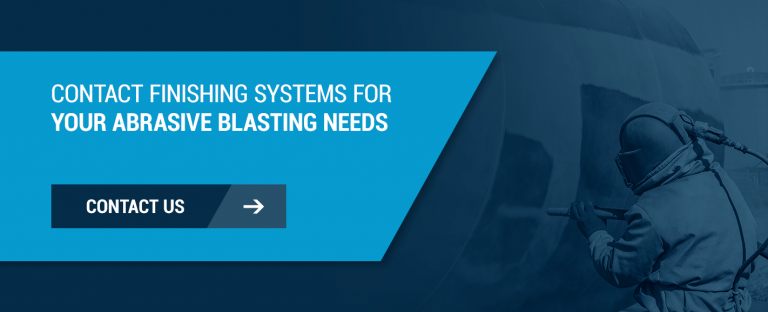Abrasive Blasting Checklist

Abrasive Blasting Checklist
Updated: March 20, 2023Abrasive blasting is a common technique used across many industries, from automotive to shipbuilding. It allows for efficient surface preparation before painting or sealing. However, because it involves high-pressure abrasive materials, safety must be a top priority.
The power of abrasive blasting means that workers must take precautions to avoid serious injuries. Proper personal protective equipment (PPE) is essential, as well as regular maintenance of the blasting equipment. Employers should ensure that all team members are trained and aware of the risks involved.
This checklist covers key safety steps and best practices to help you and your team stay safe while using abrasive blasting equipment. From choosing the right materials to inspecting your tools, this guide will help you manage hazards effectively.
Contact Us
What Is Abrasive Blasting?
Abrasive blasting, also known as sandblasting, is a process that uses compressed air or water to propel abrasive particles at high speed against a surface. The goal is often to clean, remove rust, or prepare a surface for coating. This method is fast and effective, making it a popular choice in many industrial settings.
Common Materials Used in Abrasive Blasting
There are many different types of abrasives available, each suited for different applications. Here are some of the most commonly used materials:
- Glass beads: Eco-friendly and free of silica, these are ideal for gentle cleaning without removing too much material.
- Crushed glass: Offers aggressive cutting action, great for heavy coatings.
- Aluminum oxide: Versatile and durable, suitable for a wide range of tasks.
- Plastic: Lightweight and less aggressive, good for softer surfaces.
- Silicon carbide: One of the hardest materials, perfect for fast and efficient blasting.
- Steel shot and grit: Ideal for heavy-duty applications like removing corrosion.
- Starblastâ„¢: A blend of staurolite sands with low silica content, offering uniform results.
- Black Beauty®: Chemically inert and effective for removing coatings without damaging substrates.
- Ground walnut shells and corn cobs: Biodegradable and gentle, perfect for delicate surfaces.
Potential Hazards of Abrasive Blasting
Abrasive blasting can expose workers to several hazards, including airborne dust, loud noise, and high-speed particle streams. Some of the main risks include:
- Airborne contaminants: Silica and other toxic particles can cause long-term health issues if inhaled.
- Loud noise: Prolonged exposure may lead to hearing loss.
- Physical injury: High-speed particles can cause cuts, burns, or eye damage.
- High-pressure streams: Can cause serious injuries if not handled properly.
- Static electricity: Improper grounding can result in electric shocks.
- Vibration: Long-term use may lead to hand-arm vibration syndrome.
- Slips and falls: Wet or uneven surfaces can increase the risk of accidents.
- Heat stress: Wearing PPE for extended periods can cause heat-related illnesses.
Safety Equipment Checklist

To reduce the risks associated with abrasive blasting, it's important to use the proper safety gear. Here’s what you should have on your checklist:
- Respirator: Protects against harmful dust and particles.
- Climate control device: Helps regulate temperature inside the respirator for comfort.
- Eye and face protection: Essential for preventing eye injuries.
- Gloves: Durable and resistant to abrasion and vibration.
- Blast suit or apron: Provides full-body protection from abrasive particles.
- Protective footwear: Non-slip and impact-resistant for added safety.
- Hearing protection: Ear muffs or earplugs to prevent hearing damage.
How to Begin Every Project Safely
Before starting any abrasive blasting project, it’s crucial to follow a safety procedure. Here’s a checklist to ensure everything is in order:
Blasting Equipment
Inspect the following components before use:
- Air compressor: Check for maintenance, pressure relief valves, and location.
- Blast vessel: Ensure no cracks, leaks, or moisture inside.
- Valves, hoses, and fittings: Look for wear, leaks, and proper installation.
- Blast nozzle: Make sure it’s undamaged and appropriately sized.
Abrasive Materials
Verify that the materials are compatible, clean, and safe to use. Review the Material Safety Data Sheet (MSDS) for any hazardous substances.
Objects and Environment
Ensure objects are secured, the area is clear of hazards, and ventilation is adequate. Set up a safe blasting zone and protect electrical lines.
PPE Inspection
Check that all personal protective equipment is in good condition and meets safety standards.
Personal Hygiene During Projects
Encourage workers to maintain good hygiene practices, such as washing hands before eating and keeping contaminated PPE away from clean areas. Provide wash stations and shower facilities to promote cleanliness.

Contact Finishing Systems for Your Abrasive Blasting Needs
Abrasive blasting is an efficient way to prepare surfaces for painting or coating. With the right equipment and safety measures, you can maximize productivity while keeping your team safe. At Finishing Systems, we offer high-quality blasting solutions and expert support to meet your needs.
Whether you're looking for the right abrasive media, blasting equipment, or safety gear, we have the products and knowledge to help you succeed. Contact us today to learn more about our services and how we can support your next project.
Download the Checklist
Ningbo Yinzhou Leisheng Machinery Co.,Ltd , https://www.nblscasting.com